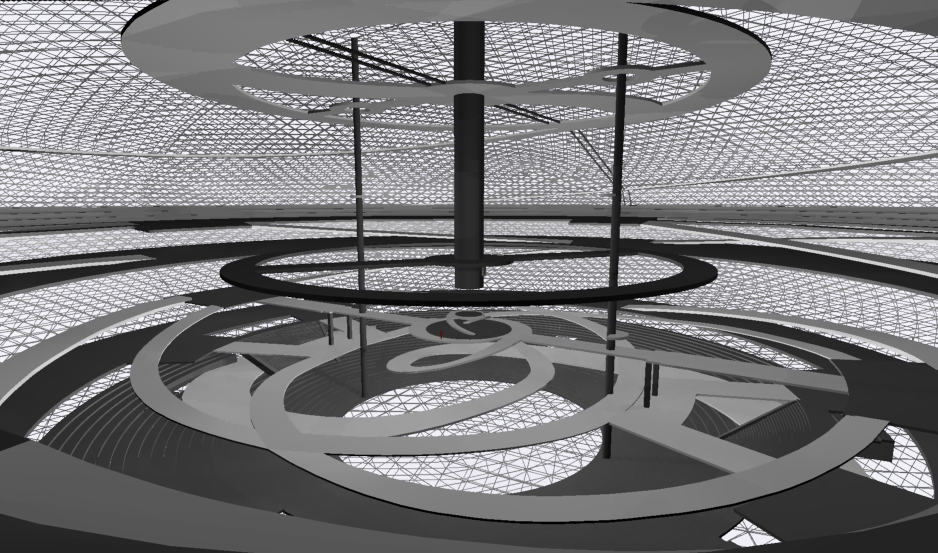
Hailed as a genius within the European Avant-Garde, the theatrical experiments of the artiste architecte Frederick Kiesler (1890-1966) are only partly acknowledged within the various histories of Twentieth-Century scenography. Nonetheless, Kiesler's radical approach to architecture and artistic attainment foresaw many of the theatrical innovations and practices that would come to represent theatre in the latter part of the last century. Notably, his remit for 'endlessness' and 'continuous movement' anticipated contemporary approaches to environmental theatre and kinetic scenography.
In 1926, Kiesler presented three architectural plans for an idealized concept for the future of theatre architecture in New York. The Endless Theatre was to be an interplay of ramp, platform and elevator: an 'endless showplace' for the development and reception of live performance. First conceived in 1916, this De Stijl member failed to attract the artistic acclaim that he had received for his earlier work in Paris, Vienna and Berlin. Ostracized from the American establishment, Kiesler's vision for the Endless Theatre would remain incomplete as he struggled for recognition in New York. Nevertheless, many of the theatre's qualities can be identified through his later designs for the Space House (1933) and the Endless House (1959).
Consequently, his concept for a theatre - where art and architecture converge - remains incomplete in the absence of a complete three-dimensional representation. Therefore, the aim of this case study is to document the structural qualities of Kiesler's vision and suggest possible cases for architectural motion.